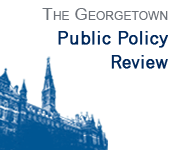by Kim Bernet
With the death toll reaching nearly 25 students this year alone, the Chicago public school system’s violence prevention policy is being given a second look. Ron Huberman, Chief of the Chicago Public School system has gone beyond the traditional policing and punishment tactics with his quantitative analysis approach in addressing the increasing problem. For the first time in the system’s history, statistical data will be taken into account to prevent future violence among the students. Results from the data collected show that the violence is not as random as it was once assumed.
With a $60 million budget from federal stimulus grants, the program assessed 500 students who were violently killed over the past few years. Huberman targeted a number of common traits among the victims. He found that class attendance rates, race, sex, home environment, and classroom behavior were all key traits. Using those same traits and analyzing the current students, he has identified roughly 10,000 students with the highest risk of becoming future victims.
The real question is what action Huberman and his colleagues will take now that the data analysis is complete.
Huberman has outlined a policy to prevent violent action that includes providing the 10,000 potential victims with a part-time job, increasing adult supervision, and having a mentor on call 24 hours a day. He plans to shift the current policy’s focus of punishment and policing to a more mental health centered prevention-based policy.
While Huberman has garnered wide spread applause for his ideas, to date, his policy plans have not been transformed into action. Collecting the data was the easy part. The more challenging aspects still lie ahead, as successful implementation of the program and adequate follow-up research will be key to its effectiveness. Huberman has also yet to outline how they will measure the program’s success.
This new plan comes after countless failed programs aimed at reducing violence in the area, so it is understandable that skepticism is widespread. As the area has a long history of violence and gangs, it is hard to believe that such a targeted approach will make a difference where so many previous attempts have failed. The cultural roots of the gang violence go beyond the reach of the chief of the school district and his policies, but it’s hoped that with this restructuring, the daily lives of these potential victims will be altered, and ultimately saved.
If successful, this policy approach has potential to be a model for other schools with high levels of violence. As a promising solution, the play out of his program will be watched closely by many hopeful families and school systems around the country.
Established in 1995, the Georgetown Public Policy Review is the McCourt School of Public Policy’s nonpartisan, graduate student-run publication. Our mission is to provide an outlet for innovative new thinkers and established policymakers to offer perspectives on the politics and policies that shape our nation and our world.
